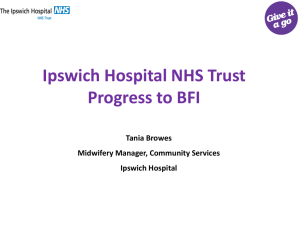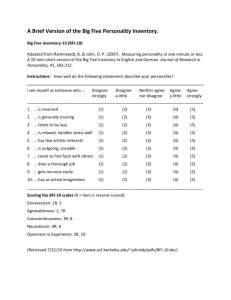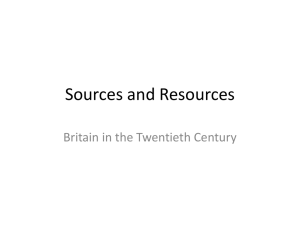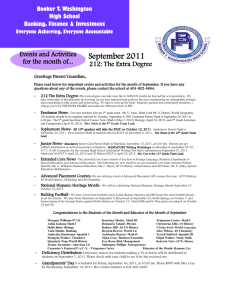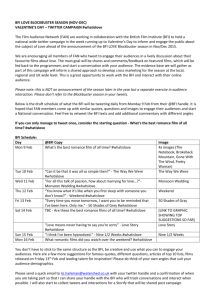REPORT OF LEAD MEMBER FOR CORPORATE SERVICES TO CABINET ON 18
advertisement
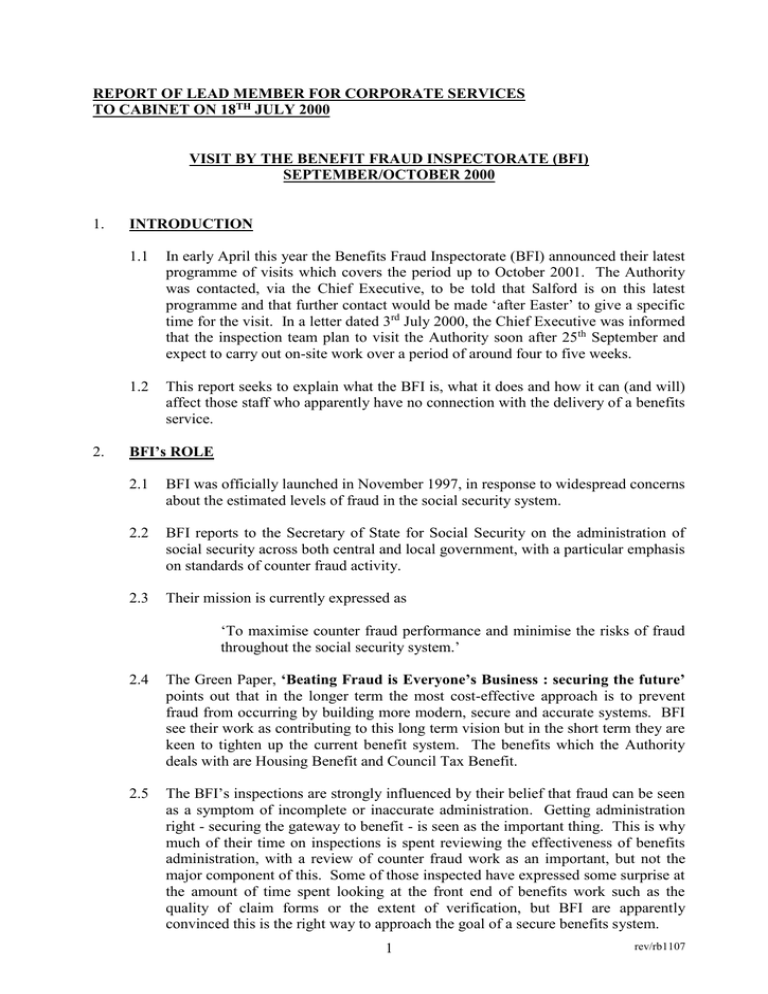
REPORT OF LEAD MEMBER FOR CORPORATE SERVICES TO CABINET ON 18TH JULY 2000 VISIT BY THE BENEFIT FRAUD INSPECTORATE (BFI) SEPTEMBER/OCTOBER 2000 1. 2. INTRODUCTION 1.1 In early April this year the Benefits Fraud Inspectorate (BFI) announced their latest programme of visits which covers the period up to October 2001. The Authority was contacted, via the Chief Executive, to be told that Salford is on this latest programme and that further contact would be made ‘after Easter’ to give a specific time for the visit. In a letter dated 3rd July 2000, the Chief Executive was informed that the inspection team plan to visit the Authority soon after 25th September and expect to carry out on-site work over a period of around four to five weeks. 1.2 This report seeks to explain what the BFI is, what it does and how it can (and will) affect those staff who apparently have no connection with the delivery of a benefits service. BFI’s ROLE 2.1 BFI was officially launched in November 1997, in response to widespread concerns about the estimated levels of fraud in the social security system. 2.2 BFI reports to the Secretary of State for Social Security on the administration of social security across both central and local government, with a particular emphasis on standards of counter fraud activity. 2.3 Their mission is currently expressed as ‘To maximise counter fraud performance and minimise the risks of fraud throughout the social security system.’ 2.4 The Green Paper, ‘Beating Fraud is Everyone’s Business : securing the future’ points out that in the longer term the most cost-effective approach is to prevent fraud from occurring by building more modern, secure and accurate systems. BFI see their work as contributing to this long term vision but in the short term they are keen to tighten up the current benefit system. The benefits which the Authority deals with are Housing Benefit and Council Tax Benefit. 2.5 The BFI’s inspections are strongly influenced by their belief that fraud can be seen as a symptom of incomplete or inaccurate administration. Getting administration right - securing the gateway to benefit - is seen as the important thing. This is why much of their time on inspections is spent reviewing the effectiveness of benefits administration, with a review of counter fraud work as an important, but not the major component of this. Some of those inspected have expressed some surprise at the amount of time spent looking at the front end of benefits work such as the quality of claim forms or the extent of verification, but BFI are apparently convinced this is the right way to approach the goal of a secure benefits system. 1 rev/rb1107 2.6 3. The bulk of BFI’s work so far has concentrated on local authorities (LAs), but they also work in the Benefits Agency (BA), Child Support Agency (CSA), Contributions Agency (CA) and the Department of Social Security (DSS), and they will be publishing reports on this work in due course. BFI AND GOOD PRACTICE 3.1 The Green Paper looked to BFI’s inspections to promote collaboration and spread good practice. In their first Annual Report, ‘Securing the system’ they commented:‘We look forward. We do not simply identify problems with the way social security is administered. We work in partnership with those inspected to develop workable solutions.’ We welcome such a partnership approach and are keen to learn from BFI’s broad experience in this field. 3.2 The elements of secure benefits delivery which BFI look for under each of eight areas relevant to the effective and secure administration of benefit are: claims initiation assessment and determination payment and accounting change and repeat claims fraud deterrence fraud prevention fraud detection fraud investigation 3.3 In addition, the DSS’s Verification Framework is seen as helping the LAs to secure the gateways to Housing Benefit (HB) and Council Tax Benefit (CTB). The Framework is regarded by BFI as an important step forward and many LAs have agreed with DSS to implement it. The Framework represents a minimum set of operating standards and in their inspections BFI assess LAs against these and other standards. 3.4 At the present time the City Council has not adopted formally the Verification Framework (VF). From its inception the VF has been promulgated as best practice, but not as mandatory. Whilst there is no fundamental disagreement with the principles of the VF the perceived difficulties with it, shared by many authorities, centre around the cost and the practical impact of its adoption and installation. In essence the VF requires more evidence to be available before a benefit claim is paid, which has implications for staffing levels and systems used. 2 rev/rb1107 4. 3.5 DSS make funds available to ease the impact of increased costs arising from the VF but the experience of authorities which have gone down this route is that the funds do not meet (by a significant margin) the full costs which arise. Perhaps more significantly in terms of service delivery, adoption of the VF appears to be accompanied by a large increase in backlogs of processing claims. For these reasons this Authority has so far taken what steps it can to move it in the direction of the VF, without going all the way. 3.6 It was recognised from the start that the VF was a sensible road to go down in terms of good practice and that there would be increasing pressure from DSS to adopt it, even though it remained non-mandatory. As part of the 2000/2001 Revenue Budget proposals there is a plan to centralise benefits administration. Such a development will move us further in the VF direction and more importantly will release funds which will become available to add to those provided by DSS if the Authority decides to adopt formally the VF. Without these extra funds being available there seems little point in going for adoption. 3.7 It is therefore proposed that the Authority should commit itself formally to having the VF in place by October 2001 and that funds made available from the centralisation of benefits administration be devoted to this goal. THE VISIT 4.1 BFI visits are akin to visits from other regulatory and investigatory agencies such as OFSTED or the Social Services Inspectorate. The report produced at the end of the visit is published and a systemic follow-up process seeks to ensure that changes, which were identified as being necessary, are in fact put into action. The ultimate sanction is to have the benefits function taken out of our hands and offered up to other service providers. 4.2 In terms of managing the visit there is much that can be learnt from those previously visited, from District Audit and from our own experience of the OFSTED visit. The Social Security Administration (Fraud) Act 1997 gave power to the BFI to have access to documents, information and explanations from anyone involved in benefit administration. 4.3 The BFI review process is thorough and wide-ranging; a team of ten people experienced in benefits work will spend four to five weeks in the Authority testing, observing and measuring systems and processes and speaking to whoever they wish to. Whilst the main focus of their attention is likely to be Corporate Services (Finance) and Housing Services other functions could be involved. Anyone involved in post opening or reception duties, for example, could be interviewed. At a different level they are likely to be interested in the Authority’s approach to the maintenance of standards as evidenced by codes of conduct to guide staff handling benefit claims. They will expect to see procedures for vetting of staff recruited to benefits posts, which has implications for Personnel Services and possibly for our approach to equal opportunities. Liaison arrangements within our organisation are also likely to receive attention. For example, the contact between Corporate Services and Housing Services on the specific point of properties in multiple occupation, and with Community and Social Services (and other agencies) on antipoverty matters. 3 rev/rb1107 5. 6. CONCLUSION 5.1 The BFI review is likely to be concentrated in Corporate Services and Housing Services but others could be involved. 5.2 The review will be deep and wide with a public report at the end of it and a followup programme installed. 5.3 Members should be aware that whilst we have very many points of good practice there are certain less well-developed areas of the service that will attract criticism from the BFI. These areas are not being ignored but the time available before the visit does not allow for all the plans and changes to be put into effect. 5.4 The BFI visit will be resource intensive both before and during the inspection and could have a knock-on effect upon important planned service development issues, e.g., the introduction of the call centre and centralisation of benefits administration. The potential impact is currently being assessed. RECOMMENDATIONS 6.1 Members of Cabinet are asked to note the content of this report. 6.2 Members are asked to approve in principle the proposal made in paragraph 3.7 above that the Verification Framework be adopted and in place by October 2001. RB/MM 11 July, 2000 4 rev/rb1107
